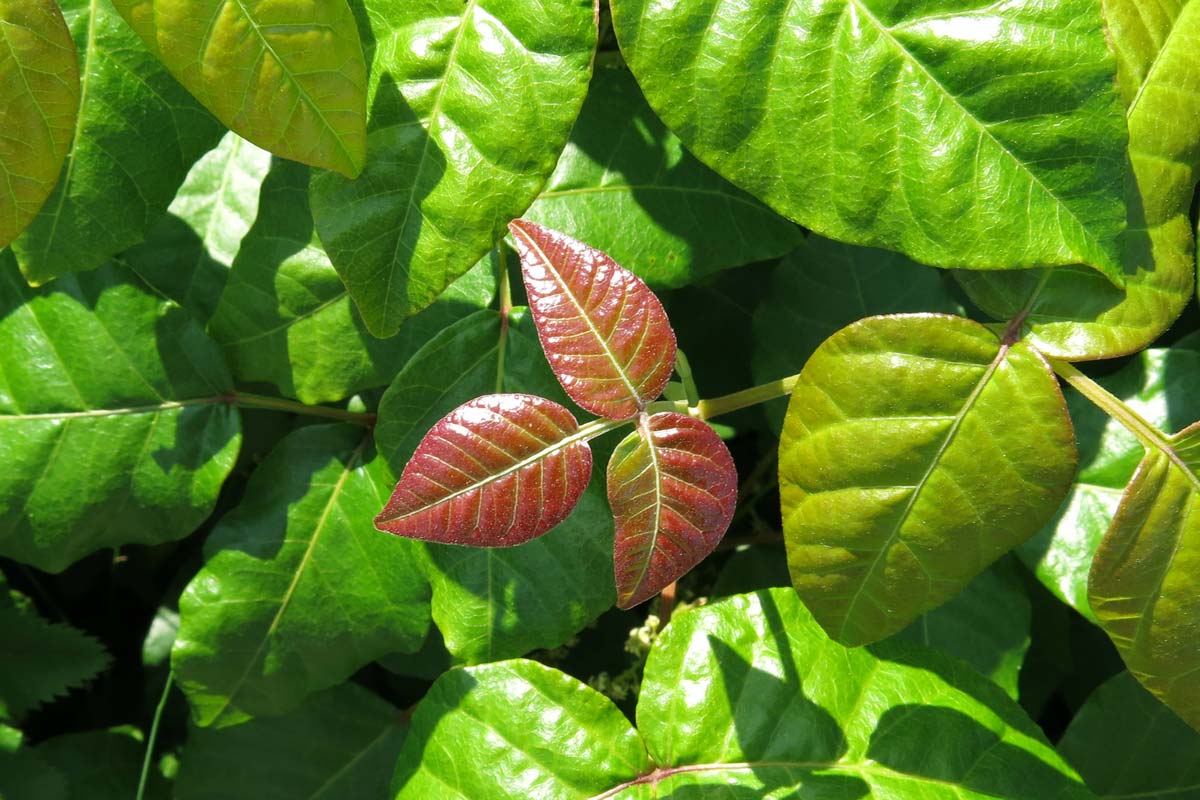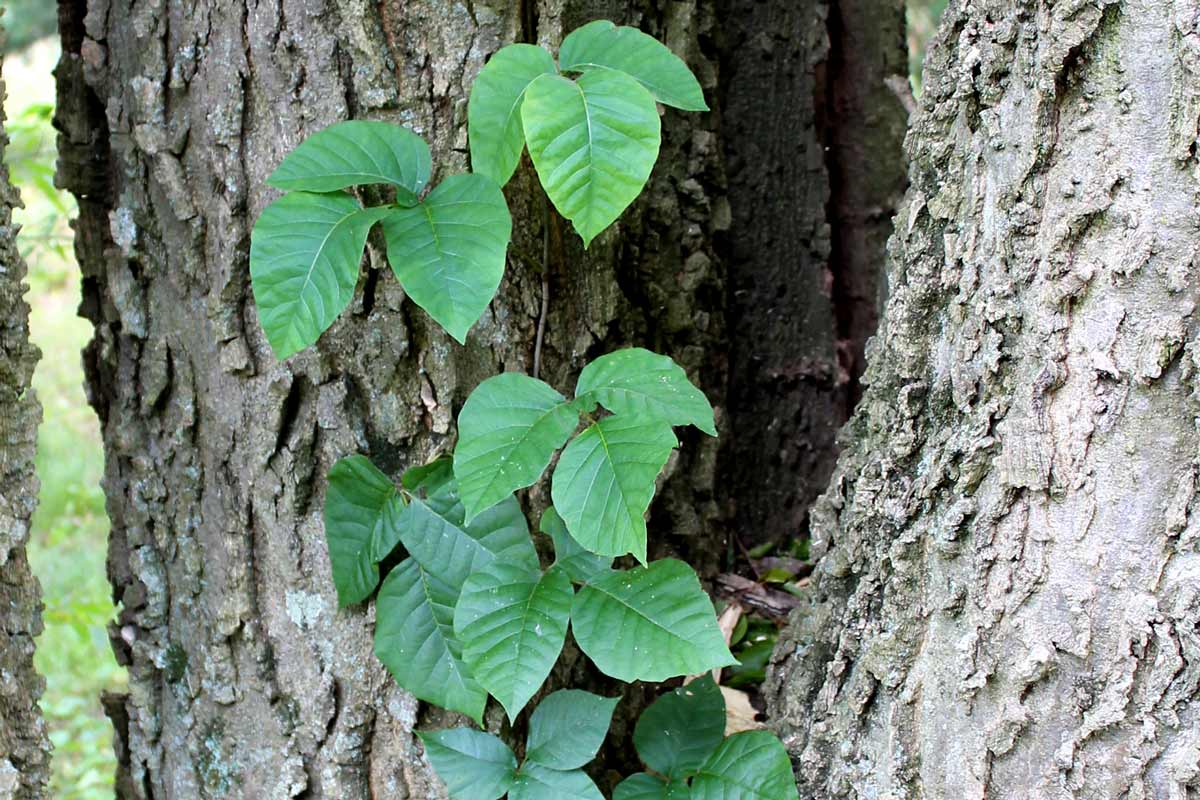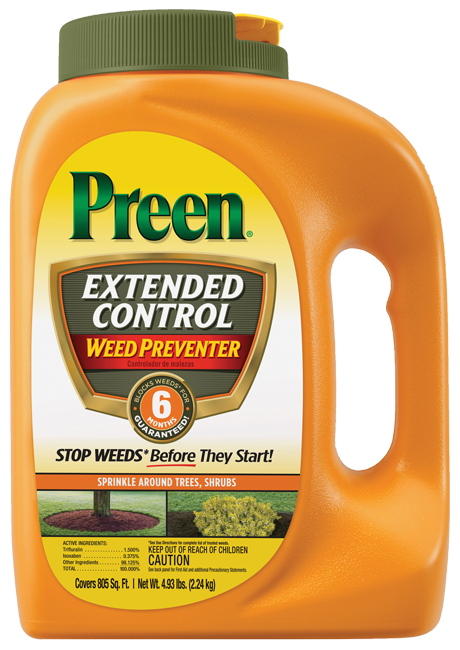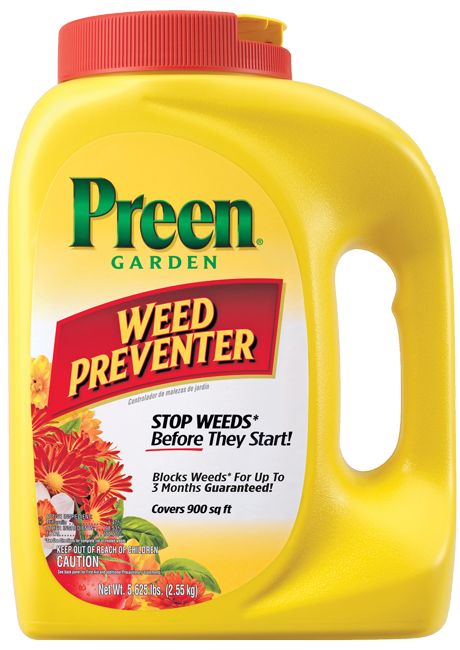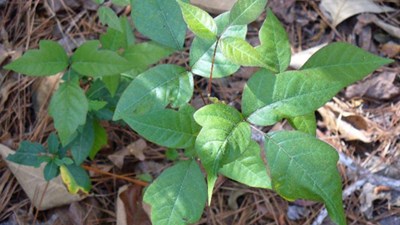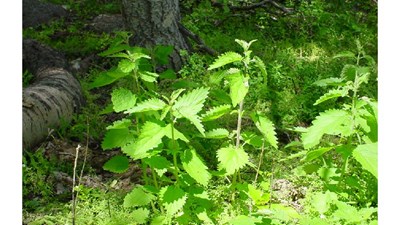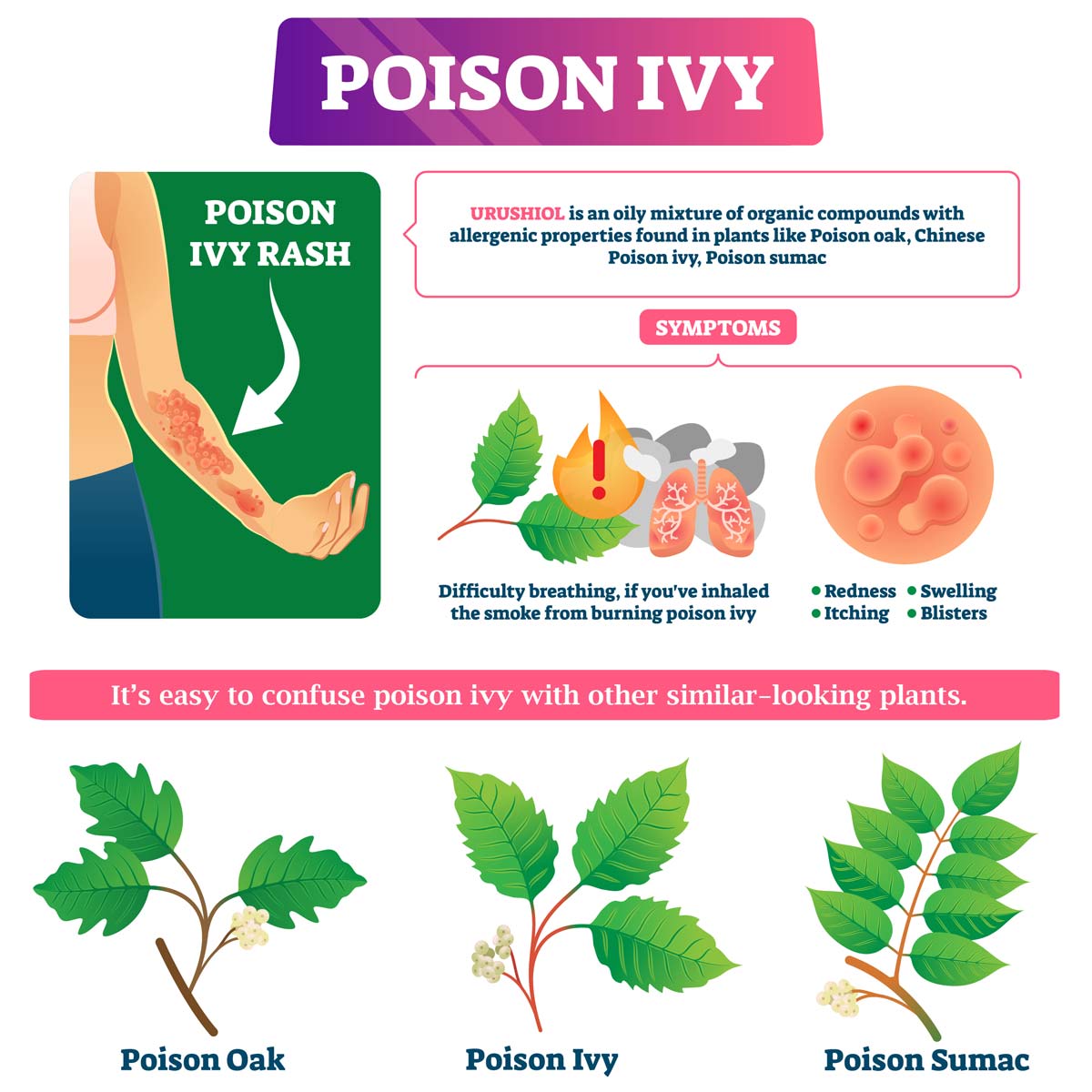
Although Urushiol oil can be found in other plant types, poison ivy is its own unique plant differentiated by the fact that it always has three leaves unlike other Urushiol carriers. VectorMine / iStock / Getty Images Plus
2. You can get a rash even in winter or when poison-ivy plants are dead.
Urushiol oil is in every part of a poison-ivy plant, not just the leaves, and it can remain viable even after plants are dead.
That means you can still get a rash by pulling leafless vines in winter or handling vines after you’ve killed them with a weed-killer. Some people have had their worst rashes in winter.
The rash-causing Urushiol oil can remain viable for as long as five years after poison-ivy plants are dead.
3. You’re never guaranteed to be immune.
About 85 percent of the population gets rashes from poison ivy.
Some people are more sensitive than others, with ages 5 to 20 being the most sensitive age range. Sensitivity tends to lessen for people from their 30s on.
However, just because you touch poison ivy and don’t get a rash one day, doesn’t mean you won’t get a rash another day. You could get a rash next touch – especially if you get more oil on your skin. In other words, it’s possible for people who never got a rash before to suddenly get one at an older age.
You can’t build immunity by eating poison-ivy leaves either. That’s a dangerous myth that could cause a serious rash in your throat.
4. Burning or weed-whacking poison ivy is even more harmful than touching it.
One of the worst ways to tackle poison ivy is to cut it down with a string trimmer. That spews oil, throwing it on your clothes and possibly getting it in your eyes or nose.
Worst of all is burning yanked or dead poison-ivy plants. Urushiol oil gets in the smoke, and if that’s breathed, a very painful and possibly even fatal rash can affect your lung lining.
Never mow, weed-whack, or burn poison-ivy plants – dead or alive.
Learn safe techniques for getting rid of poison ivy and further equip yourself to be able to identify the vine.
5. The rash itself is not contagious.
Despite the ease with which you can get a rash from poison ivy, you won’t get a rash by touching someone’s rash or blisters, which typically occur two to three days after oil exposure.
However, there’s a chance you could get a rash if the person hasn’t washed oil from the skin. The same goes for spreading the rash around your body. The fluid in the rash won’t spread the reaction, but any left-over oil could.
